

resilience sustainabilityopportunityrelationshipscollaborationregional local equity water resources July 2023 | Draft LOS ANGELES COUNTY WATER PLAN Our Route to Water Supply Resilience
The County of Los Angeles recognizes that we occupy land originally and still inhabited and cared for by the Tongva, Tataviam, Serrano, Kizh, and Chumash Peoples. We honor and pay respect to their elders and descendants – past, present, and emerging – as they continue their stewardship of these lands and waters. We acknowledge that settler colonization resulted in land seizure, disease, subjugation, slavery, relocation, broken promises, genocide, and multigenerational trauma. This acknowledgment demonstrates our responsibility and commitment to truth, healing, and reconciliation and to elevating the stories, culture, and community of the original inhabitants of Los Angeles County. We are grateful to have the opportunity to live and work on these ancestral lands. We are dedicated to growing and sustaining relationships with Native peoples and local tribal governments, including (in no particular order) the
Fernandeño Tataviam Band of Mission Indians
Gabrielino Tongva Indians of California Tribal Council
Gabrieleno/Tongva San Gabriel Band of Mission Indians
Gabrieleño Band of Mission Indians - Kizh Nation
San Manuel Band of Mission Indians
San Fernando Band of Mission Indians
To learn more about the First Peoples of Los Angeles County, please visit the Los Angeles City/ County Native American Indian Commission website at lanaic.lacounty.gov.

2 |
The Los Angeles County Water Plan (CWP) would not have been possible without the guidance, contribution, and support from numerous groups and individuals. Please see Appendix G for a full list of contributors.
PAGE LEFT INTENTIONALLY BLANK
EXECUTIVE SUMMARY OUR ROUTE TO RESILIENCE, TOGETHER VISION
Climate change is establishing a “new normal” of more frequent and intense droughts, coupled with less frequent but more torrential rains. Recognizing this new climate reality and the need to be thoughtful stewards of future water supplies, the Los Angeles County Board of Supervisors envisioned the development of a countywide water plan focused on collaborative management of Los Angeles County’s water resources. Los Angeles County Public Works (Public Works) developed this Los Angeles County Water Plan (CWP), together with water resources organizations and an array of diverse stakeholders, to secure Los Angeles County’s water future and achieve our collective vision of equitable and sustainable water resources for everyone. The CWP builds upon the Infrastructure LA initiative, establishing the path to realizing our vision that is rooted in cross-sector collaboration and coalition building.
The CWP articulates a shared, inclusive, regional path forward to sustainably achieve safe, clean, and reliable water resources for Los Angeles County.


WATER PLAN 4 |
SHARED OPPORTUNITIES FOR WATER RESILIENCE

THE CWP FOCUSES ON ACHIEVING REGIONAL WATER RESILIENCE THROUGH COLLABORATIVE STRATEGIES. Over 200 agencies in Los Angeles County manage a complex network of water systems to meet the needs of our communities and environment. To achieve sustainability and resilience, cross-sector teamwork and a holistic approach to best leverage natural systems and infrastructure are essential. The CWP is a living document. The Targets, Strategies, and Actions are a starting point in this effort.
It is not intended to address every water-related issue in Los Angeles County. Instead, it builds upon and complements the many existing local and regional water planning efforts by focusing on four key focal areas where new or additional regional collaboration can add value. These four key focal areas were established through a gaps analysis, which included a review of local and regional planning documents, along with initial stakeholder discussions encompassing a variety of perspectives. For each of the four key focal areas, the CWP describes shared desired outcomes, identified by Public Works through discussions with numerous groups and individuals. The CWP provides an approach for achieving these desired outcomes through collaboration and a platform for measuring progress.
CWP Four Key Focal Areas
REGIONAL WATER SUPPLY RELIABILITY
Improving regional water supply reliability by better leveraging our collective local and imported water resources and infrastructure.
GROUNDWATER MANAGEMENT AND QUALITY
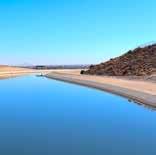
Realizing our shared groundwater management opportunities by sharing expertise and resources to overcome challenges.
SMALL, AT-RISK SYSTEM RESILIENCE AND DRINKING WATER EQUITY
Ensuring a consistently high standard of water service for everyone in Los Angeles County by providing regional support for small systems, with focused attention to underserved communities.

WATERSHED SEDIMENT MANAGEMENT
Mitigating the impacts of wildfire on our water supplies through coordinated efforts between land and water managers.

| 5 WATER PLAN
REGIONAL STRATEGIES, REGIONAL BENEFITS
The CWP is organized around a framework of targets and strategies, which are supported by specific actions. Targets measure collective progress toward the shared desired outcomes for the key focal areas of the CWP. These targets are intended to help Los Angeles County achieve regional water resilience by 2045. See Chapter 2 for more on targets. We will publish an interactive dashboard to track progress toward these targets. Strategies provide the overarching approaches to achieving the targets. Actions support the strategies and include specific steps to drive results, along with timing, and responsible agencies.
Strategies for a Resilient Water Future
STRATEGY 1
Achieving the most efficient water use possible countywide
STRATEGY 2
Collaborating on consistent drought preparedness and response messaging
STRATEGY 3
Coupling local supply development with regional conveyance
STRATEGY 4
Managing salt and concentrate regionally
STRATEGY 5
Leveraging regional groundwater storage potential
STRATEGY 6
Collaborating on water quality needs and treatment technologies
STRATEGY 7
Enhancing cost-effectiveness of pumping and treating impaired groundwater
STRATEGY 8
Protecting coastal groundwater basins from seawater intrusion
STRATEGY 9

Facilitating regional groundwater recharge understanding and initiatives
STRATEGY 10
Facilitating natural infiltration of precipitation
STRATEGY 11
Providing regional support for small, at-risk water systems
STRATEGY 12
Mitigating wildfire effects on water supply and quality
STRATEGY 13
Managing invasive species in riparian areas
STRATEGY 14
Facilitating sediment management and debris removal from flood control facilities
WATER PLAN 6 |
VALUES GUIDING FUTURE ACTION
At the onset of CWP development, Public Works proactively reached out to a diverse group of stakeholders to understand what matters to them. We identified several broad, overarching values for the CWP through these conversations. Some of these values provided core tenets to our overall process for preparing the CWP. Others guided us in establishing targets, strategies, and actions. Other values, while not directly addressed through the actions in the CWP, will continue to inform how water resource management is approached. Each of these values will guide future iterations of the plan, as well as steps taken throughout CWP implementation.
These values are aligned with LA County’s Anti-Racism, Diversity, and Inclusion (ARDI) Initiative, which aims to guide the County by offering training and capacity building, technical assistance and planning, policy analysis and development, data collection, analysis and reporting, community and stakeholder engagement, and equity infused resourcing and programming to help reach its goals.
CWP VALUES
• Consider equitable benefits and impacts of water resource management decisions
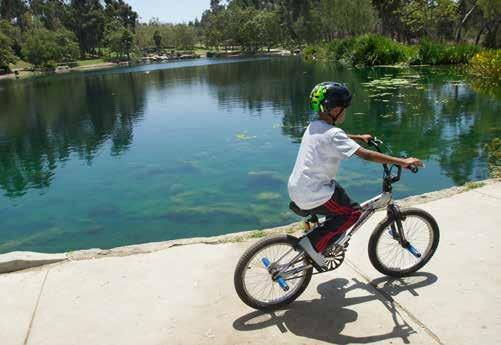
• Ensure inclusive, diverse, multigenerational, and sustained community engagement
• Use data to inform policies, priorities, and practices
• Encourage multi-benefit projects and green infrastructure
• Integrate vegetated and nature-based solutions
• Promote capacity building of a local skilled workforce
• Incorporate tribal knowledge into water management
• Ensure CWP is actionable and adaptable
• Address climate resiliency
• Establish clear communications—outline priorities, listen, incorporate feedback, maintain dialogue
The CWP aims for sound stewardship of all watersheds and groundwater basins that uplifts all communities. The CWP outlines a path to achieve a resilient water future for all Los Angeles County residents. Everyone has a role in successfully realizing the CWP. By working across County departments and with other partners, actively engaging stakeholders, seeking funding to support CWP implementation, and tracking and reporting on progress, we are committed to facilitating the ongoing collaboration that is core to making the CWP successful.
| 7 WATER PLAN
WATER PLAN 8 | TABLE OF CONTENTS Los Angeles County Water Plan Executive Summary ......................................................................... 4 Chapter 1: Los Angeles County Water Plan Vision 10 Achieving Regional Water Resilience through Collaboration...................................................... 10 Focusing on Regional Challenges .................................................................................................... 12 CWP Structure ..................................................................................................................................... 14 Values Guiding Future Action ........................................................................................................... 15 Working Together to Develop the CWP .......................................................................................... 16 Chapter 2: Targets for a Resilient Water Future ................................................................................. 18 Regional Water Supply Reliability 20 Groundwater Management and Quality ........................................................................................ 21 Small, At-Risk System Resilience and Drinking Water Equity ...................................................... 22 Watershed Sediment Management 23 Chapter 3: Strategies and Actions for a Resilient Water Future ...................................................... 24 Strategy 1: Achieving the most efficient water use possible countywide ............................... 26 Strategy 2: Collaborating on consistent drought preparedness and 28 response messaging Strategy 3: Coupling local supply development with regional conveyance 30 Strategy 4: Managing salt and concentrate regionally ............................................................... 32 Strategy 5: Leveraging regional groundwater storage potential: ............................................. 34 Strategy 6: Collaborating on water quality needs and treatment technologies .................... 36 Strategy 7: Enhancing cost-effectiveness of pumping and treating 38 impaired groundwater
| 9 WATER PLAN Strategy 8: Protecting coastal groundwater basins from seawater intrusion ....................... 40 Strategy 9: Facilitating regional groundwater recharge understanding and initiatives 42 Strategy 10: Facilitating natural infiltration of precipitation: ..................................................... 44 Strategy 11: Providing regional support for small, at-risk water systems .............................. 46 Strategy 12: Mitigating wildfire effects on water supply and quality ....................................... 48 Strategy 13: Managing invasive species in riparian areas ......................................................... 50 Strategy 14: Facilitating sediment management and debris removal from ........................... 52 flood control facilities Chapter 4: Working Together for a Resilient Water Future.............................................................. 56 Facilitating the CWP Program ........................................................................................................... 57 Engaging in the CWP Program 59 Our Road to Water Resilience Together ......................................................................................... 59 Appendices Appendix A: Two-Year Action Plan Appendix B: CWP Targets Appendix
Related Planning Efforts Appendix
CWP Development Meetings and Outcomes
Existing
C:
D:
Appendix E: Strategies and Actions Crosswalk to
Planning Efforts
Appendix F: Acknowledgements
Appendix G: Abbreviations
1
CHAPTER 1
ACHIEVING REGIONAL WATER RESILIENCE THROUGH COLLABORATION

The Los Angeles County Water Plan (CWP) focuses on achieving countywide water resilience through collaborative strategies. Over 200 agencies manage a complex network of water systems to meet the needs of our communities and environment. Cross-sector teamwork and a holistic approach to best leverage natural and engineered systems are essential to achieve safe, clean, and reliable water resources for the present and future generations of Los Angeles County. This chapter provides the vision for the CWP, along with an overview of the CWP development process and outcomes.
VISION
The CWP articulates a shared, inclusive, regional path forward to sustainably achieve safe, clean, and reliable water resources for Los Angeles County.

WATER PLAN 10 |
While the opportunities for more effective water management are great, water resources in Los Angeles County are becoming increasingly stressed. Climate change is establishing a “new normal” of more frequent and intense droughts, coupled with less frequent but more torrential rains. Groundwater basin levels are declining, and some of our most underserved communities do not have equitable access to consistently reliable, high-quality drinking water. California wildfires, sometimes fueled by invasive species, can impact water supplies and water quality. At the same time, water management in Los Angeles County is already rapidly evolving to address many of the region’s most pressing water issues. Water agencies throughout Los Angeles County are working to solve these challenges. Regional programs that capture stormwater or produce recycled water are contributing significantly the region’s objectives. Recognizing the value in working together, these agencies are eager to collaborate with each other and community stakeholders to develop integrated programs and projects that provide innovative solutions to complex problems.
In 2016, in the face of a new climate reality and recognizing the need to be thoughtful stewards of water supplies, the Los Angeles County Board of Supervisors called for the articulation of specific actions to secure Los Angeles County’s water future. Public Works – as a regional entity with integrated interests – is well-positioned to facilitate countywide coordination to enhance water resilience, building upon the cross-sector collaboration that is being facilitated through the Infrastructure LA initiative. Working together with water resources organizations and a diverse array of stakeholders in Los Angeles County, we developed this CWP to achieve our collective vision of equitable and sustainable water resources for everyone.

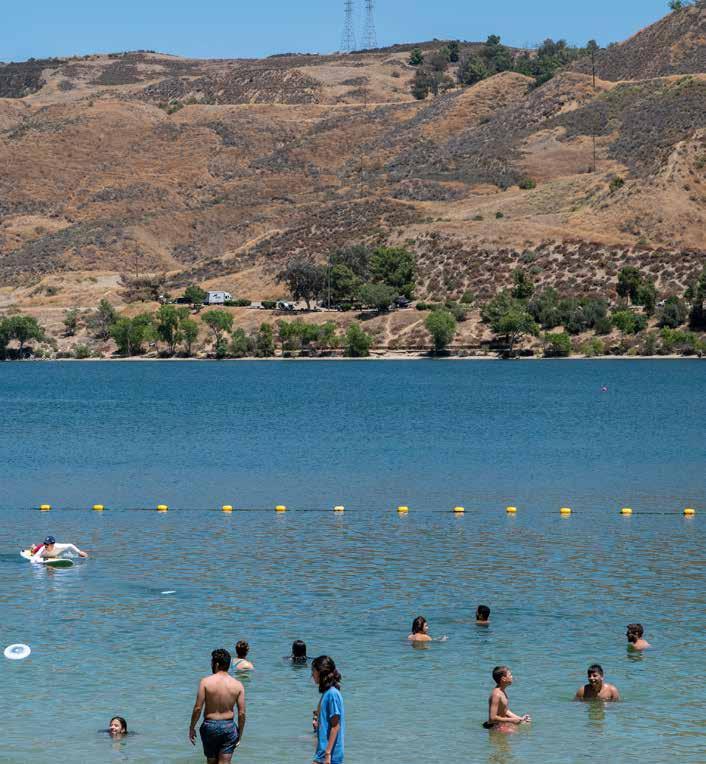
| 11 WATER PLAN
All residents of Los Angeles County, present and future generations, deserve safe, clean, and reliable water resources
Castaic Lake: Clean water and healthy watersheds are vital resources to Los Angeles County residents
ESTABLISHING FOCAL AREAS
Since water resilience is of shared interest across agencies and customers, planning for our future water resources is a shared responsibility. Working together with water resource managers and diverse stakeholders in Los Angeles County, we developed the CWP to complement existing local and regional efforts, specifically focusing on challenges where collaboration can add value.
REGIONAL WATER SUPPLY RELIABILITY

GROUNDWATER MANAGEMENT AND QUALITY

Throughout the County there is a focus on leveraging local resource development like maximizing recycled water through agency-led projects and the Safe, Clean Water Program that will create significant local supply through stormwater quality improvement. To address the challenges of climate change, water supply reliability must be considered through a regional and integrated view of supplies including natural rivers, streams, lakes, groundwater basins, and engineered systems throughout Los Angeles County. By viewing these systems as regional networks, water resource managers can adopt a collaborative planning perspective beyond individual jurisdictional boundaries, ownership factors, or singular functions. In turn, the region is able to better leverage the collective local and imported water resources, infrastructure, and relationships to improve regional water supply reliability.
Groundwater basins in Los Angeles County share management challenges and opportunities. Given that nearly all of Los Angeles County’s groundwater basins are managed through formal adjudication agreements, management discussions are often separated by basin which has historically limited opportunities for collaboration. Regional collaboration to seek solutions that leverage collective expertise and resources to benefit Los Angeles County as a whole can help overcome shared challenges across groundwater basins.
WATER PLAN 12 |
The key focal areas for this first iteration of the CWP reflect a subset of the opportunities to improve water resource management through regional collaborative approaches, in particular those not currently being provided through other efforts. The CWP is a living document and future iterations of the CWP may focus on additional or different issues as water resource needs in Los Angeles County continue to evolve. The CWP is not intended to address every water-related issue in Los Angeles County, but to make progress in the following four key focal areas.
SMALL, AT-RISK SYSTEM RESILIENCE AND DRINKING WATER EQUITY
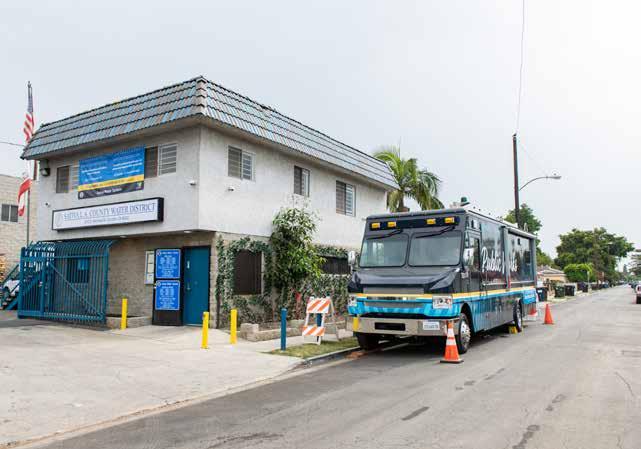
WATERSHED SEDIMENT MANAGEMENT
Small water systems play a key role in providing water supply to communities in Los Angeles County but some small systems are particularly at risk due to a variety of circumstances including aging or inadequate infrastructure and lack of funding, especially within underserved communities. Regional support for small systems can ensure that a consistently high standard of service be achieved and maintained throughout Los Angeles County.
The increase in frequency and intensity of wildfires within Los Angeles County has both direct and indirect impacts on water supply and water quality. Land and water managers, together, can mitigate wildfire potential and manage the impacts from postfire rainfall events to improve the resilience of our water supply and infrastructure.
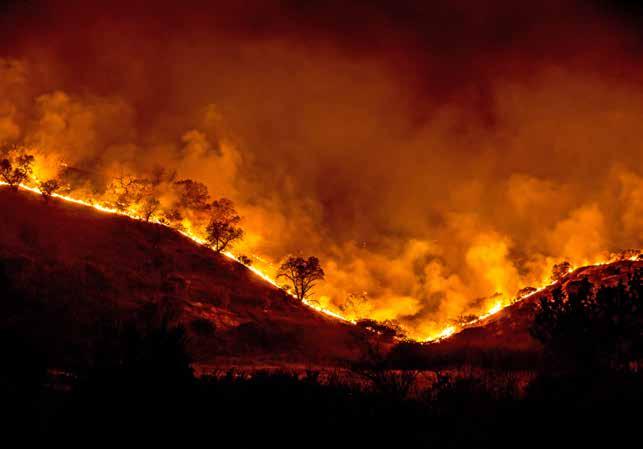
| 13 WATER PLAN
CWP STRUCTURE
The CWP is organized around regional targets for water resilience, along with strategies and actions to support progress on these targets. The targets, strategies, and actions and their respective roles in addressing the CWP’s focal areas are defined below.
Targets:
Targets provide a quantitative representation of shared desired outcomes for regional water resilience across Los Angeles County by 2045. Targets are intended to be met through CWP strategies and actions along with other local and regional efforts. These targets provide a metric to measure and track progress implementing the CWP. A detailed discussion of target development and analysis can be found in Appendix B.
Strategies:
Fourteen overarching strategies provide the regional, collaborative approaches to achieving the targets. The strategies can be implemented through the CWP directly or indirectly through acknowledgement or support of other programs and planning efforts that have a shared purpose. More information on related planning efforts is available in Appendix C.
Actions:
Actions include specific steps that can be carried out, through an ongoing CWP implementation process, to support the strategies. As many of the larger actions may require several interim steps to be completed, the CWP contains a two-year Action Plan (Appendix A). The Action Plan provides further specificity for potential next steps that can be used to advance the discussion of implementation and corresponding resources.
Equation for a Resilient Water Future
CWP Strategies & Actions
WATER PLAN 14 |
Other Local and Regional Efforts
CWP Targets + =
VALUES GUIDING FUTURE ACTION
At the onset of CWP development, Public Works proactively reached out to a diverse group of stakeholders to understand what matters to them. We identified several broad, overarching values for the CWP through these conversations. Some of these values provided core tenets to our overall process for preparing the CWP. Others guided us in establishing the targets, strategies, and actions. Other values, while not directly addressed through the actions in the CWP, will continue to inform how the CWP approaches water resource management.
Although these values are not explicitly referenced within every target, strategy, and action, they are fundamental to the plan as a whole and will continue to guide future iterations of the plan, as well as steps taken throughout CWP implementation.
These values are aligned with LA County’s Anti-Racism, Diversity, and Inclusion (ARDI) Initiative, which aims to guide the County by offering training and capacity building, technical assistance and planning, policy analysis and development, data collection, analysis and reporting, community and stakeholder engagement, and equity infused resourcing and programming to help reach its goals.
CWP VALUES Consider equitable benefits and impacts of water resource management decisions
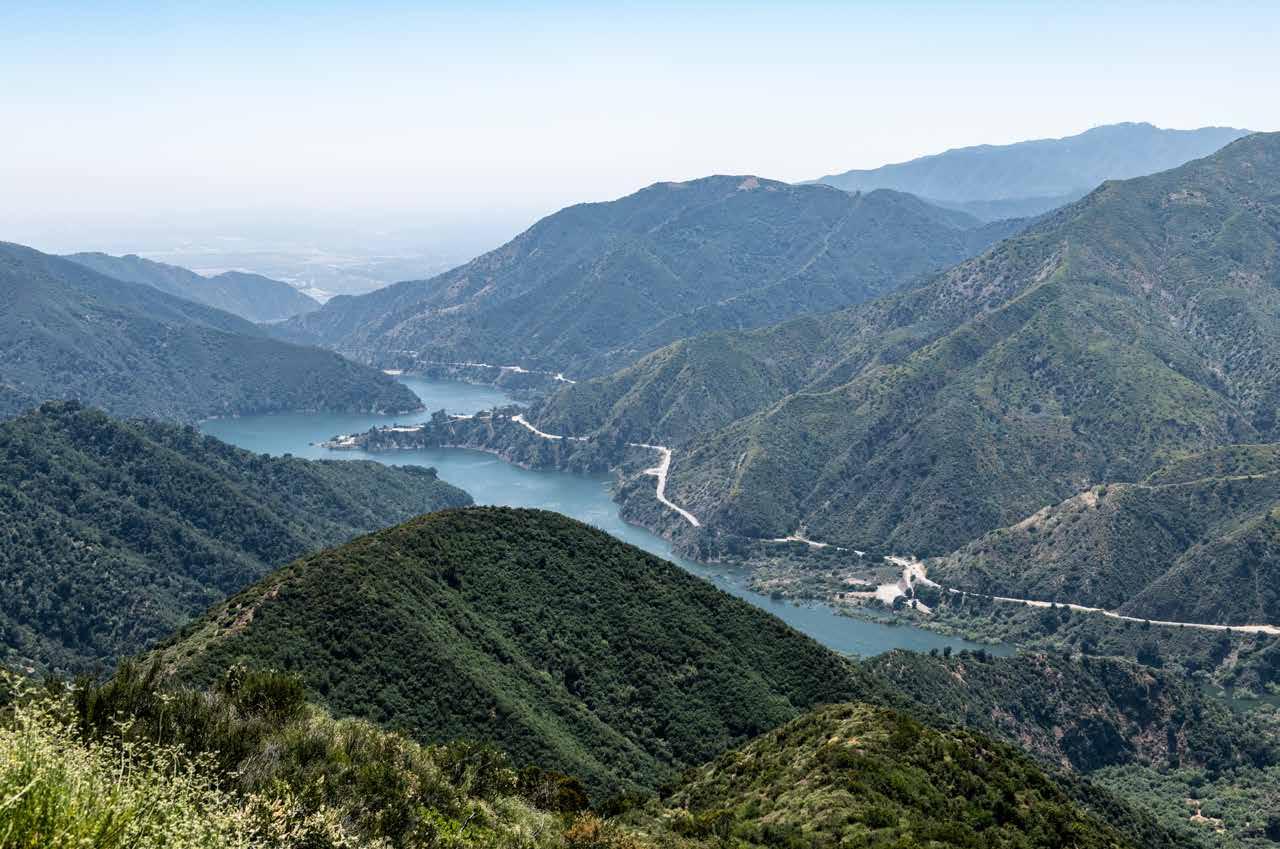
Ensure inclusive, diverse, multigenerational, and sustained community engagement
Use data to inform policies, priorities, and practices
Encourage multi-benefit projects and green infrastructure
Integrate vegetated and nature-based solutions
Promote capacity building of a local skilled workforce
Incorporate tribal knowledge into water management
Ensure CWP is actionable and adaptable
Address climate resiliency
Establish clear communications—outline priorities, listen, incorporate feedback, maintain dialogue
| 15 WATER PLAN
WORKING TOGETHER TO DEVELOP THE CWP
Building on the foundation of the OurCounty Sustainability Plan, the CWP was developed through a series of dialogues with nearly 100 water management agency representatives, tribes, non-governmental organizations, local governments, and stakeholders. After first defining the collective needs and desired outcomes for our region’s water resilience, stakeholders progressed from development of targets to strategies and finally to a specific, implementable two-year Action Plan. Details on the meetings and workshops that supported CWP development are provided in Appendix D.
Identifying priorities
Prior to beginning CWP development, a gaps analysis was performed to understand water resource needs in Los Angeles County. This initial step included a review of local and regional planning (much of which was conducted on a watershed scale) and regulatory documents, and State and Federal legislation. To provide a better understanding of regional priorities, initial discussions were held with stakeholders representing a variety of perspectives. This gaps analysis provided diverse perspectives on water management challenges, initiatives, local planning efforts, and participation in the development of the CWP from entities throughout Los Angeles County, including the Santa Clarita Valley, Antelope Valley, and Greater Los Angeles area.
Previous work done through the Integrated Regional Water Management (IRWM) process informed much of the discussion including an understanding of existing local efforts that support equitable and sustainable water resources. The gaps analysis also considered input received during the OurCounty and the Safe, Clean Water Program initiatives. Significant recycled water programs are being spearheaded by agencies including the City of Los Angeles, Metropolitan Water District of Southern California, Los Angeles County Sanitation Districts, Las Virgenes Municipal Water District, and Santa Clarita Valley Water District. We will be building off the work they are doing to further regional collaboration that has already begun through these programs.

WATER PLAN 16 |
• Providing regional leadership on environmental water quality
• Partner on CWP stormwater and recharge related strategies and actions
• Established regional resilience goals from community input to inform CWP
• Water related targets supported by CWP strategies and actions
WATER PLAN
LOCAL & REGIONAL WATER RESOURCES PLANS
• Identified regional needs supported by CWP strategies and actions
• Implementing direct projects and programs needed to meet CWP targets
• Providing regional leadership on infrastructure resilience
• Partner on CWP infrastructure related strategies and actions
• Leading regional collaboration to bring resources to the region, including funding.
INTEGRATED REGIONAL WATER MANAGEMENT PROGRAMS
• Providing regional funding for water resilience initiatives and forums for stakeholder engagement

• Implementing regional projects and programs needed to meet CWP targets
Establishing targets, strategies, and actions
Targets, strategies, and actions were developed through an iterative process, with multiple groups contributing ideas and building upon concepts identified by one another through a series of 45 workshops and listening sessions. Facilitated dialogue in workshop-style settings enabled content to be developed through discussion with stakeholders across multiple sectors. The CWP benefited from broad input across interests and geographies by partnering with the three IRWM regions in Los Angeles County and using their meetings to workshop ideas and concepts. Feedback received through other regional efforts, such as the Safe, Clean Water Program and OurCounty Sustainability Plan, also informed the CWP development. In addition to the workshops, many meetings were held with tribes, environmental and environmental justice organizations, water management entities, local governments, and other stakeholders across Los Angeles County. The workshops and other meetings helped to develop targets, identify regional strategies, and create a realistic action plan. The workshops and other meetings also provided opportunities for stakeholders to express their interest to participate in the CWP implementation.
| 17 WATER PLAN
The CWP complements and builds upon other local and regional planning efforts.
CHAPTER 2 TARGETS FOR A RESILIENT WATER FUTURE

CWP targets reflect shared desired outcomes for regional water resilience across Los Angeles County by 2045. Meeting these targets requires successful implementation of both local and regional efforts, projects, and programs, including many efforts led outside of the CWP. Guided by implementable two-year action plans, CWP strategies and actions will support progress towards targets. The targets were developed to enable future progress tracking that leverages existing and easily reportable data sources in addition to any new information on benefits provided by stakeholder projects.
Targets that were meaningful and measurable were identified through the CWP planning effort. The resulting targets within each of the four focal areas are presented in this chapter with corresponding metrics and background context. Further details as to how each individual target was developed and how it will be tracked are included in Appendix B.
When stakeholders were asked their desired outcomes for future water resilience, some examples they gave were:
WATER PLAN 18 |
2
“
Equity, affordability and resilience”
“Ability to withstand droughts”
“Better connectivity between isolated systems”
“Reduce fire-related damage”
“Understanding of opportunities for partnerships”
“Regional forum to discuss common concerns, issues, opportunities“
MEANINGFUL TO REFLECT DESIRED OUTCOMES
REGIONAL WATER SUPPLY RELIABILITY

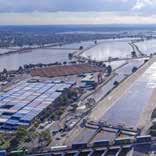

As an example, targets developed for the Regional Water Supply Reliability focal area reflect more than the desire to fully leverage local supply potential across Los Angeles County. They were also selected to provide regional consistency in how we address water use efficiency as well as drought and emergency response.

MEASURABLE FOR FUTURE TRACKING
To ensure that progress in achieving CWP targets was trackable, a numeric element was added to each target concept. The numeric element was developed by first defining the current (or baseline) conditions and building upon the baseline to set an achievable goal by 2045. Sources and methods for acquiring data that can be used to track measurable progress toward that number were also considered. As an example, the targets created for the Groundwater Management and Quality focal area establish volumetric goals for both groundwater production and recharge that build upon current baseline levels. These targets were specifically selected to leverage data and information regularly reported through adjudication and/or other management frameworks.
How
target can be quantified How
| 19 WATER PLAN
data
target will be tracked
We used a four-step process to develop both meaningful and measurable targets. Further details are provided in Appendix B. data will be processed
will be collected How
How
TYPE DATA SOURCE METRIC CALCULATION
Within each of the focal areas, we asked the question “What are our desired outcomes for future water resilience?” Targets were formed to provide a meaningful yet quantifiable expression of those strongly- and commonly-held desired outcomes. Targets are intended to be Countywide or regional.
SMALL, AT-RISK SYSTEM RESILIENCE AND DRINKING WATER EQUITY
GROUNDWATER MANAGEMENT AND QUALITY
WATERSHED SEDIMENT MANAGEMENT
Targets reflect desired outcomes in each of the four CWP focal areas
REGIONAL WATER SUPPLY RELIABILITY TARGETS
AAchieve 100% compliance with State Urban Water Use Objectives
B
Metric: Percent of suppliers that are meeting their State Urban Water Use Objective
C
Increase local supply sources by 580,000 AFY
Meet 100% of water demands even in times of drought
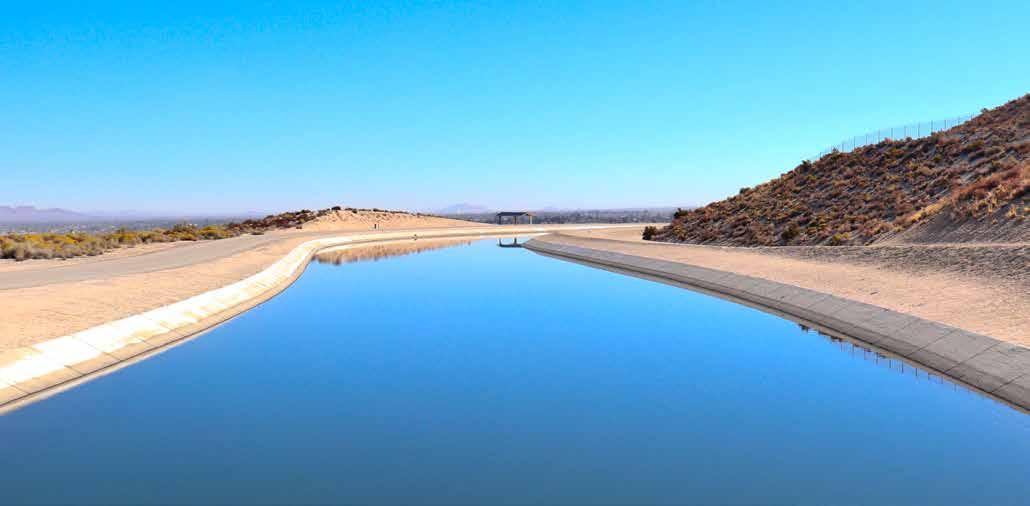
Metric: Percent of water agencies that do not require Water Shortage Contingency
Plans be implemented higher than Level 1
DMaximize ability to meet health and safety needs following an emergency by maintaining access to six months of emergency supply
Metric: Percent of water agencies that have access to six months of water supply for an emergency
Providing reliable water supplies in drought conditions is an increasing challenge across Los Angeles County. The CWP defines water supply reliability as the ability to meet current and future needs 100% of the time, including during emergencies. The CWP targets indicate the desire for increases in water conservation and efficiency as well as the further development of local supplies to improve resilience in the face of both longer-term droughts as well as near-term emergencies.
The targets reflect an alignment with the upcoming State Water Use Objectives, which are being developed by the State Water Resources Control Board (SWRCB) and will be released after this initial iteration of the CWP. Although imported water will play a vital role in Los Angeles County in the foreseeable future, increasing local sources of water promotes water supply diversity, autonomy, and reliability as well as long-term drought resilience. In addition, water use efficiency and local supplies provide environmental benefits by reducing energy consumption and improving local water quality as well as increasing local workforce. Near-term emergency resilience is equally important and greatly enhanced by maintaining sufficient levels of locally-developed and stored supplies throughout the County.
WATER PLAN 20 |
Metric: Total water supply that is sourced within Los Angeles County
GROUNDWATER MANAGEMENT AND QUALITY TARGETS
EOptimize production of groundwater by maintaining at least 700,000 AFY baseline groundwater production
Metric: Average annual countywide AFY of groundwater production
FOptimize production of groundwater by increasing production in areas overlying impaired groundwater by 18,000 AFY
Metric: Average annual production from new treatment projects, wells brought back online, and new wells (AFY)
GIncrease groundwater recharge and storage by enhancing regional facility recharge by 250,000 AFY
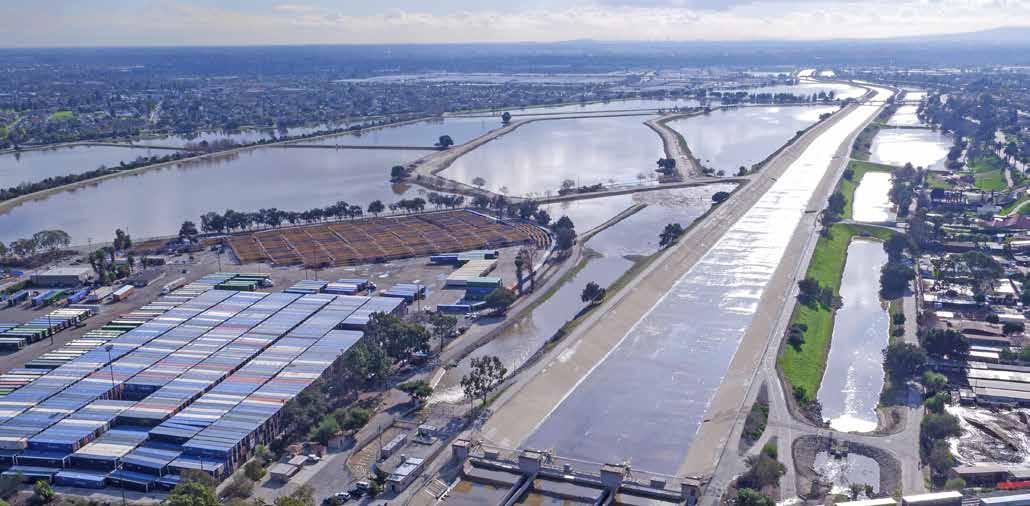
HIncrease groundwater recharge and storage by increasing decentralized infiltration by 30,000 AFY
Metric: Average annual countywide AFY of groundwater recharge at existing and future facilities/spreading grounds
Metric: Average annual countywide AFY of groundwater recharge outside of existing and future facilities/spreading grounds
Groundwater basins provide a critical source of local supply along with seasonal and annual storage that can be accessed during drought conditions. The ability to fully maximize groundwater basin potential for both supply and storage can be constrained by water quality regulations, sea level rise, poor water quality, and regulated remediation zones. While groundwater basins are managed in isolation of each other, these shared constraints can benefit from shared solutions. Unused local, impaired (or “stranded”) groundwater is poorer quality water that would require additional relatively cost-ineffective treatment and/or conveyance for beneficial use. Being able to further tap into and use localized areas of impaired groundwater would enhance regional resilience. Additionally, leveraging combined groundwater storage potential through enhanced groundwater recharge of local and imported water would improve local emergency, seasonal, annual, and long-term supply reliability.
| 21 WATER PLAN
SMALL, AT-RISK SYSTEM RESILIENCE AND DRINKING WATER EQUITY TARGETS
IReduce at-risk systems by 100%
Metric: Number of water systems classified as in the categories of failing, at-risk, or potentially at-risk
J100% of water agencies in severely disadvantaged communities have affordable cost of water to meet health and safety needs
Metric: Percent of water agencies in severely disadvantaged communities where the cost of water for health and safety (6,000 gallons) does not exceed 2.5% median household income
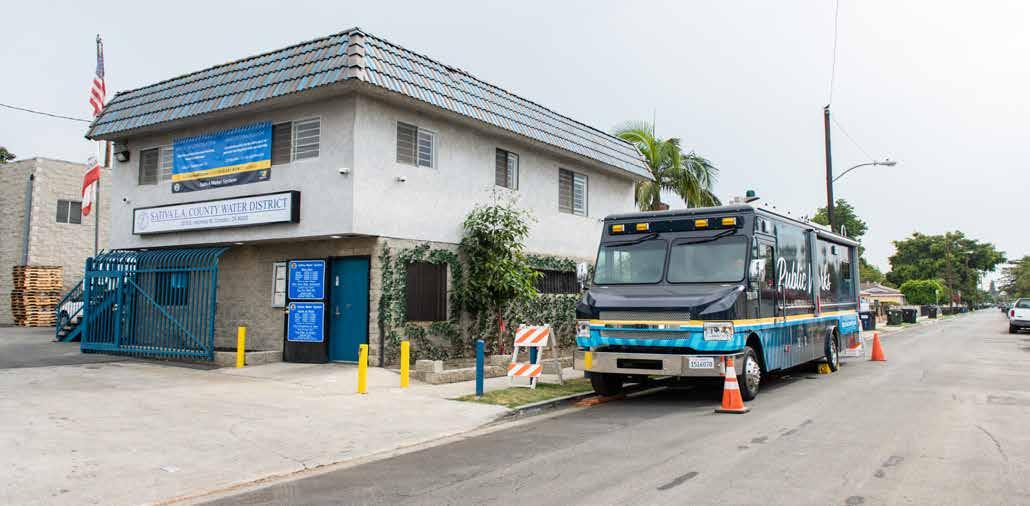
KReduce color, taste, and odor drinking water quality issues by 50%
Metric: Number of customer complaints per 1,000 connections about color, taste, and/ or odor
LMaximize ability to meet health and safety needs following an emergency by confirming 100% of small community water systems have access to alternative sources of supply
Metric: Percent of small community water systems that have access to at least one other secondary water supply
With over 200 water supply entities in Los Angeles County of various sizes and supply portfolios, not all systems are able to provide consistently high quality, reliable drinking water to their customers. Many small and at-risk systems provide water to underserved communities and have limited resources and revenue potential to address water quality and quantity needs. While recognizing the differing costs of water by source, these targets aim for improvement in the availability and affordability of water supply across Los Angeles County. Although maximum contaminant levels are seldom exceeded for primary regulated constituents, there are several areas that regularly experience color, odor, and taste issues. Customer satisfaction is a fundamental part of equitable water delivery and every resident in Los Angeles County should have access to high quality, clean water for drinking, bathing, and other household uses. Additionally, many smaller, at-risk systems have only one source of supply and have no real options if that source becomes impaired or is interrupted during an emergency. For these systems an intertie or connection to alternative sources of supply is essential.
WATER PLAN 22 |
MReduce fire-contributing species in riparian areas by 2,900 acres

Metric: Acres of riparian areas that have undergone at least one invasive species removal program
WATERSHED SEDIMENT MANAGEMENT TARGETS
NReduce human-caused ignitions by 50%
Metric: Count of fire ignitions in wildlands, rural, and the wildland-urban interface
OMaintain a minimum of 75% average available capacity in debris basins and 80% average capacity in reservoirs
Metric: Percent of available capacity in debris basins and percent of available capacity in reservoirs
PConfirm 100% of water management agencies within the wildland-urban interface are implementing a wildfire resilience or mitigation plan
Metric: Percent of agencies that have implemented fire prevention measures and percent of agencies that have alternative or backup energy supply
Wildfire frequency, intensity, and rate of spread have increased within the wildland-urban interfaces in Los Angeles County. These events create direct impacts to local water resources through destruction or impairment of water supply and wastewater infrastructure, as well as indirect effects on surface water quality and watershed functionality. In addition, post-wildfire impacts of erosion and debris flows on watershed lands can create flood management emergencies as well as long-term reduction in debris basin functionality and reservoir storage and groundwater recharge potential. Reducing wildfire ignition sources and fire-contributing species that exacerbate wildfire impact are key areas to target for enhanced resilience. In addition, the ability to effectively manage existing flood control debris basins and reservoirs to their highest potential is critical to protecting the environment and communities as well as our ability to maximize stormwater capture during precipitation events. Water management agencies within wildland-urban interfaces need to be prepared for wildfire events and have plans in place for them to mitigate wildfire damage, respond during wildfire events, and minimize post-wildfire impacts.
| 23 WATER PLAN
CHAPTER 3 STRATEGIES AND ACTIONS FOR A RESILIENT WATER FUTURE

Fourteen CWP strategies have been developed to capitalize on the opportunities identified for further regional collaboration to meet the shared CWP targets. Each strategy presented in this chapter is supported by a suite of detailed actions that will be facilitated throughout CWP implementation. The strategies and actions are aligned with the CWP values which include ensuring inclusive, diverse, multigenerational, and sustained community engagement and ensuring the CWP is actionable and adaptable. A table showing the alignment between CWP targets and strategies is provided at the end of this chapter. Collectively, these strategies and actions will help to meet multiple targets both directly and indirectly by leveraging resources across Los Angeles County that support and complement existing local and regional water resilience efforts, projects, and programs. These complementary and supported planning efforts are acknowledged in Appendix C.
Many of these strategies and actions will take time to fully realize but will provide interim benefits along the way. By continually identifying and taking near-term steps, we will facilitate consistent progress on targets, strategies, and actions. A two-year Action Plan, which identifies the steps and resources needed to implement actions within the current two-year period is included as Appendix A.
WATER PLAN 24 |
3
Strategies for a Resilient Water Future
STRATEGY 1
Achieving the most efficient water use possible countywide
STRATEGY 2
Collaborating on consistent drought preparedness and response messaging
STRATEGY 3
Coupling local supply development with regional conveyance
STRATEGY 4
Managing salt and concentrate regionally
STRATEGY 5
Leveraging regional groundwater storage potential
STRATEGY 6
Collaborating on water quality needs and treatment technologies
STRATEGY 7
Enhancing cost-effectiveness of pumping and treating impaired groundwater production
STRATEGY 8
Protecting coastal groundwater basins from seawater intrusion
STRATEGY 9

Facilitating regional groundwater recharge understanding and initiatives
STRATEGY 10
Facilitating natural infiltration of precipitation
STRATEGY 11
Providing regional support for small, at-risk water systems
STRATEGY 12
Mitigating wildfire effects on water supply and quality
STRATEGY 13
Managing invasive species in riparian areas
STRATEGY 14
Facilitating sediment management and debris removal from flood control facilities
| 25 WATER PLAN
Achieving the most efficient water use possible countywide
The State’s Urban Water Use Objectives (to be adopted by the SWRCB) are intended to establish a reasonable level of water use that will meet the unique demands within each of Los Angeles County’s over 200 urban water supplier service areas. The ability to achieve the new standards countywide would be greatly enhanced through regional collaboration that sets consistent expectations on water use efficiency throughout Los Angeles County, while accommodating the unique needs of diverse communities.
Actions to support this strategy
1.1
Facilitate universal access to Los Angeles Region Imagery Acquisition Consortium data sets to help urban water suppliers accurately estimate irrigable area and reasonable water use for their service area.
1.2
Coordinate outdoor landscaping ordinances between cities, County, wholesalers, retail water agencies, and other local agencies (e.g., non-functional turf ordinances, Senate Bill 1383 mulch and composting).
1.3 Provide access to Model Water Efficient Landscape Ordinance compliance training for all water suppliers in Los Angeles County.
WATER PLAN
On Target
Facilitating access to water use efficiency data and training as well as ordinance coordination will help meet the target to achieve 100% compliance with State Urban Water Use Objectives.
WATER PLAN 26 | STRATEGY 1
Why this strategy is needed
Los Angeles County has made significant strides in water use efficiency, reducing water use by approximately 13% since 2010 despite a 2% growth in population. Achieving the next level of efficiency to meet State objectives and improve resilience will require innovation and collaboration. In addition to improving water supply sustainability, using water efficiently also helps to improve water quality by reducing the amount of water that is conveyed and treated.
| 27 WATER PLAN
Los
1000 1250 1500 1750 2000 2010 2019
Total Water Use in Los Angeles County (Thousand Acre-Feet)
Total Los Angeles County Water Supply
Angeles County Population
Collaborating on consistent drought preparedness and response messaging
Given that people often live, work, and travel within different areas of Los Angeles County, collaboration between water agencies on messaging drought declarations and specific actions that the public can take to respond is critical in effectively preparing for and responding to future droughts.
Actions to support this strategy
2.1
Collaborate on countywide drought response messaging that calls out steps that all water users in Los Angeles County can take, while directing the public to find the specific measures their water supplier is taking to respond to the local drought.
2.2
Expand upon ongoing efforts to create consistent messaging on the development of drought-resilient supplies.
WATER PLAN
On Target
Improving regional drought messaging will help us collectively achieve our target to meet 100% of water demands even in times of drought.
WATER PLAN 28 | STRATEGY 2
WATER SHORTAGE CONTINGENCY PLAN LEVELS | APRIL 2022
Water Shor tage Contingency Pla n Level s, Apr i l 2022
Shortage level not reported or not required
Shor tage l evel not r epor ted or not r equir ed
Shor tage l evel 0 (no shor tage)
Shortage level 0 (no shortage)
Shortage level 1 (0% to 10% shortage)
Shor tage l evel 1 (0% to 10% shor tage)
Source: State Water Resources Control Board Conservation Portal, April 2022
Shortage level 2 (shortage up to 20%)
Shor tage l evel 2 (shor tage up to 20%)
Shortage level 3 (shortage up to 30%)
Shor tage l evel 3 (shor tage up to 30%)
Variability in water supply conditions and shortage levels across the many water suppliers in Los Angeles County can create customer confusion and public messaging challenges.
Immediate public reduction in water use is the fastest way to respond to an existing drought; however, the opportunities to further reduce use in response to droughts becomes increasingly constrained as countywide normal water use efficiency continues to improve. Water supply agencies are finding it increasingly difficult to separate and elevate drought response messaging above regular messaging encouraging efficient water use as a way of life for Southern California. In addition, as shown in the above map, given the different water sources used by the over 200 water suppliers in Los Angeles County, there is often variability in drought conditions and associated public messaging that can create confusion for those living and working within different areas of the County.
| 29 WATER PLAN
Why this strategy is needed
Coupling local supply development with regional conveyance
Partnerships between agencies on local supply development and regional conveyance can increase the overall volume of local supply that can be used countywide, increase overall cost-effectiveness, and increase the potential for outside funding. Viewing and using existing water infrastructure networks in Los Angeles County as interconnected systems can provide opportunities, where appropriate, to better connect sources of supply to demands and/or storage. Examples of these types of efforts include regional recycled water programs and the Safe, Clean Water Program. This will improve regional reliability while also ensuring sustainable groundwater levels for communities that rely on local groundwater resources.
Actions to support this strategy
3.1
Explore options to improve feasibility (e.g., cost-effectiveness) of beneficial reuse of recycled water within Antelope Valley and Upper Santa Clara River areas of Los Angeles County.
3.2
Encourage the use of Los Angeles County Flood Control District facilities to convey water supplies across Los Angeles County while mitigating known issues.
3.3
Promote use of smart technology to assess capacity and ability of wastewater systems to accept stormwater diversion flows in existing and planned infrastructure.
3.4
Promote use of both regional local supply development and distributed local supply development (e.g., cisterns, graywater systems in unsewered areas) and stormwater capture.
WATER PLAN
On Target
Connecting local supplies to local needs can provide alternative water supplies in alignment with the CWP target to maximize ability to meet health and safety needs following an emergency by confirming 100% of small water systems have access to alternative sources of supply.
WATER PLAN 30 | STRATEGY 3
Why this strategy is needed
" Im po rted Wa ter Trea tm en t Plan ts
" Im po rted Wa ter Trea tm en t Plan ts
Water Treatment Plants
" Im po rted Wa ter Trea tm en t Plan ts
% Wat er Reclam at io n P la nt s
% Wat er Reclam at io n P la nt s
% Wat er Reclam at io n P la nt s
Im po rted Wa ter Co nv eya nce
Im po rted Wa ter Co nv eya nce
Im po rted Wa ter Co nv eya nce
Flo o d Co n tro l Ch an nels
o d Co n tro l Ch an nels
Los Angeles County has vast water infrastructure networks of conveyance and distribution systems, storage, and supply sources. Better connecting these networks can improve regional reliability.
The total amount of untapped local water supply potential in Los Angeles County is significant and could greatly reduce our dependence on imported water. Without economies of scale, stormwater and recycled water supply projects are often cost-prohibitive for individual water agencies to implement locally. While there has been great progress on advancing regional recycled water program concepts, there are further opportunities for collaboration on supporting local supply development for the benefit of the entire region through partnerships on regional conveyance and using existing infrastructure. Local supply development also offers opportunities for local projects that use our local workforce.
| 31 WATER PLAN % % % % % % % % % % % % % % % % % % % % " ) " ) " ) " " ) " " " " " " " Im ported Wa ter Trea tm ent Plants % Water Reclam ation P la nts Im ported Wa ter Conv eya nce Flood Control Channels Groundwater B asins ³ 0 10 20 5 Miles
% % % % % % % % % % % % % % % % % % % % " " " " " " " " " " " ) " )
rted Wa ter Trea tm en t Plan ts % Wat er Reclam at io n P
nt s Im po rted Wa ter
eya
Flo o d Co n tro l Ch an nels Gro un d wat
asin s ³ 0 10 20 5 Miles % % % % % % % % % % % % % % % % % % % % " ) " ) " " ) " ) " ) " ) " ) " ) " ) " "
Flo
Gro
s ³ 0 10 20 5 Miles % % % % % % % % % % % % % % % % % % % % " ) " ) " " ) " ) " ) " ) " ) " ) " ) "
Im po
la
Co nv
nce
er B
) Im po rted Wa ter Trea tm en t Plan ts % Wat er Reclam at io n P la nt s Im po rted Wa ter Co nv eya nce
o d Co n tro l Ch an nels
un d wat er B asin
Gro
³ 0 10 20 5 Miles % % % % % % % % % % % % % % % % % % % % " " " " ) " " ) " ) " ) " " "
un d wat er B asin s
Flo
Gro
asin
³ 0 10 20 5 Miles % % % % % % % % % % % % % % % % % % % % " " " " ) " " ) " " " " "
un d wat er B
s
Flo
Gro un d wat er B asin s ³ 0 10 20 5 Miles
Water
Imported
Flood
Channels Groundwater Basins
o d Co n tro l Ch an nels
Imported
Reclamation Plants
Water Conveyance
Control
Managing salt and concentrate regionally
Regional cooperation is necessary to manage salt levels in our watersheds and groundwater basins. Concentrate management planning should accompany future regional recycled water program development. Collaboration with regulators to develop feasible options for regional concentrate management would help to maximize recycled water use as well as improve basin water quality.
Actions to support this strategy
4.1
Explore alternatives to restrictions on high total dissolved solids discharges to sewer systems and variable salinity water courses (e.g., Ballona Creek or Dominguez Channel), including measures to allow for salt cleanup projects and recover treatment costs for unavoidable salinity discharges (e.g., a salt surcharge).
4.2
Explore development of regional conveyance for concentrates, including co-location of concentrate pipelines with regional recycled water conveyance pipelines, considering treatment, discharge permitting, and actual costs.
4.3
Collaborate across water supply, groundwater cleanup, and recycled water programs to work with regulatory agencies on concentrate management permitting and regulations, across all areas of Los Angeles County.
WATER PLAN
On Target
Managing salt on a regional level will increase our ability to maximize recycled water for regional use and support the target to increase local supply sources by 580,000 AFY.
WATER PLAN 32 | STRATEGY 4
Why this strategy is needed
Unnatural salinity in water is produced from industrial processing, groundwater cleanups, desalters, and purified water concentrate. Excessive salt limits a supply’s beneficial use and can interfere with the operations of water and wastewater treatment plants. Concentrate, a byproduct of the advanced water treatment of wastewater, is a commonly overlooked component of recycled water projects that can have significant ecological consequences and should be specifically considered for the planned expansion of regional recycled water programs in Los Angeles County.
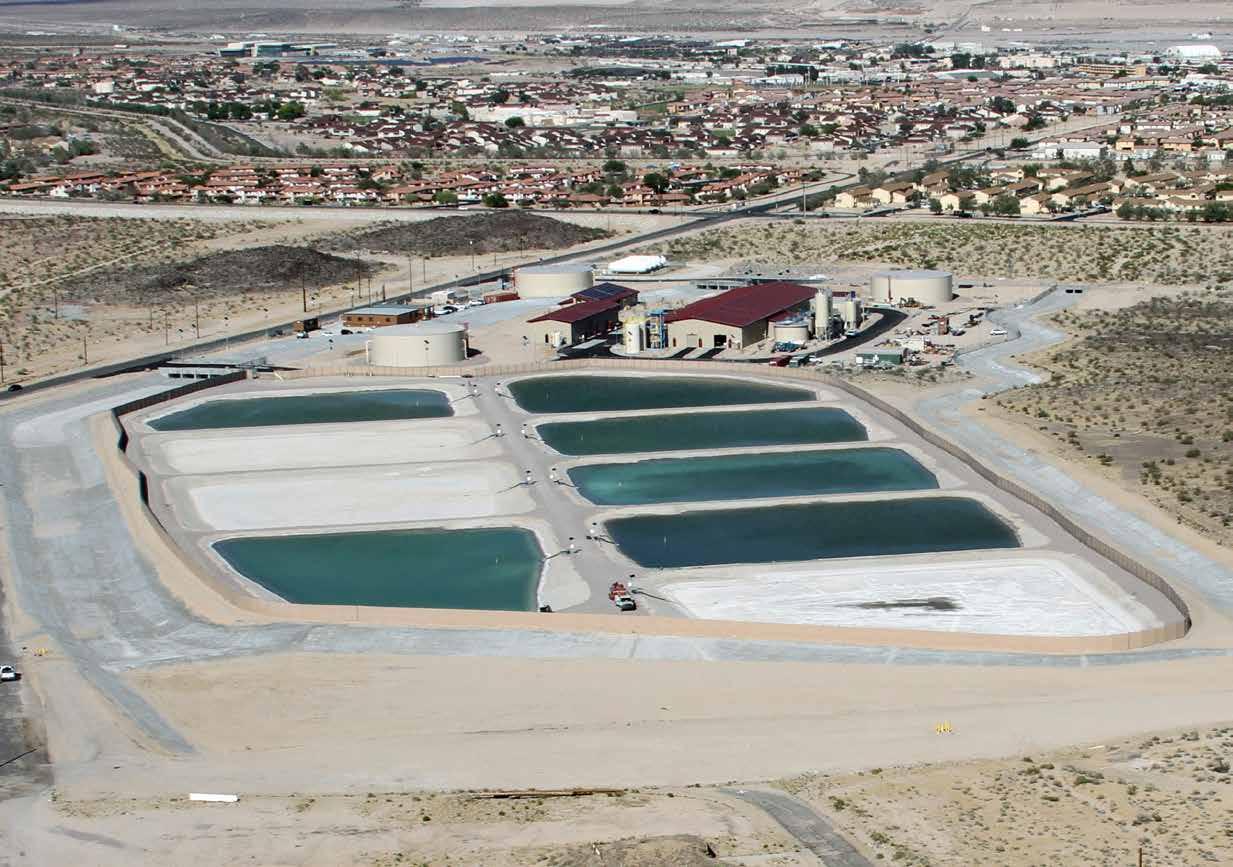
| 33 WATER PLAN
In the Antelope Valley, brine from treatment processes is discharged to local evaporation ponds where salt is concentrated for disposal.
Leveraging regional groundwater storage potential
Meeting all of Los Angeles County’s water demands depends upon the use of groundwater basins that can provide water year-round, independent of the variability of precipitation events and surface flows. Since groundwater basins do not necessarily underly the communities with the greatest needs for dry year storage, identification of groundwater storage that can be accessed and delivered on a regional scale is necessary. Existing regional conveyance infrastructure (e.g., imported water) can be used as connections between groundwater basins that will allow for stored water to be conveyed across Los Angeles County.
Actions to support this strategy
5.1
Facilitate development of regional banking agreements that promote increased groundwater replenishment and production, as well as infrastructure interconnections and enhancements to improve access to regional storage across Los Angeles County.
5.2
Expand regional Antelope Valley groundwater banking partnerships by assessing alternatives to mitigate capacity constraints of using imported water aqueducts that connect Antelope Valley to the Los Angeles Basin.
5.3
Engage in regional discussion of shared local water rights concerns and basin adjudication-based exporting restrictions.
WATER PLAN
On Target
Improving use of groundwater basins for storage provides significant opportunities to enhance local storage and support the target to maximize ability to meet health and safety needs following an emergency by maintaining access to 6 months of emergency supply.
WATER PLAN 34 | STRATEGY 5
Why this strategy is needed
Water Year
Groundwater basin recharge and storage potential vary from basin to basin across Los Angeles County. Most climate change models predict a decrease in the frequency of precipitation events and snowpack storage, as well as increases in the intensity of local precipitation events. These changes in the way that water will be delivered to the region will necessitate enhancements in the collective ability to quickly capture and store larger volumes of water for use over extended periods of time. Additionally, planned and future regional water recycling programs are expected to produce a consistently large volume of supply that will need to be stored in groundwater basins. Coordination on timing of stormwater and recycled water recharge at centralized groundwater recharge facilities will be critical.
| 35 WATER PLAN Variability in Average Annual Stormwater Runoff (% change)
-100% 2011 2023 2035 2047 2059 2071 2083 2095 -50% 0% 50% 100% 150% 200% 250% LEGEND Percent Change
2083
Variation LEGEND Average Source:
2095
United States Bureau of Reclamation Los Angeles Basin Study, November 2016
Collaborating on water quality needs and treatment technologies
Improving the efficacy and cost-effectiveness of treating impaired water is a key strategy for enhancing the reliability of regional water supplies. As legacy pollutants and new constituents of concern are regulated, and water supply sources and systems become more integrated, new challenges and innovations in water quality treatment and management processes have emerged. Economies of scale and enhanced efficiencies can be achieved through technology sharing and regional collaboration.
Actions to support this strategy
6.1
Facilitate partnerships and information sharing between agencies within Los Angeles County to improve water treatment efficiency and cost through collaboration on piloting of and training for new technologies, working with drinking water regulators, sharing of information, lab sharing for emerging contaminant sample analysis (e.g., per- and polyfluoroalkyl substances (PFOS/PFOA)), public outreach, and leveraging of staff and funding resources. This action also supports Strategy 7.
6.2
Collaborate on proactive negotiations with Regional Water Quality Control Board(s) to provide a consistent regional voice on National Pollutant Discharge Elimination System permitting and future water quality regulations.
6.3
WATER PLAN
On Target
Partnering on treatment initiatives and regulatory collaboration will decrease the overall costs to individual agencies and support the target to improve drinking water equity and affordability so that the cost for water to meet health and safety needs does not exceed 2.5% of the median household income for severely disadvantaged communities.
WATER PLAN 36 | STRATEGY 6
Advocate for State emerging contaminants source control policy and funding.
Why this strategy is needed
The cost of treating and testing water to meet water quality regulations for potable use is a significant portion of the overall water rate passed along to customers. In many areas within Los Angeles County, the treatment of locally generated, drought-resilient supplies, such as recycled water and groundwater, to a level of potable quality can drive the unit cost above imported water. This can create a disincentive to develop local supply when imported water is cheaper. Many new treatment technologies and projects are developed and permitted in isolation of each other, limiting the ability to leverage knowledge and resources. Information sharing will also improve local workforce knowledge.
Source: City of Los Angeles Bureau of Sanitation
There are many efforts to maximize water recycling throughout Los Angeles County including the City of Los Angeles’ plan to maximize beneficial reuse of Hyperion Water Reclamation Plant flow.

| 37 WATER PLAN
Enhancing cost-effectiveness of pumping and treating impaired groundwater
Improving production, cost-effectiveness, and accessibility to unused impaired groundwater supplies will allow for increased groundwater production and supply reliability for many communities across Los Angeles County. Regional collaboration on designating poor quality development zones could facilitate the development of production enhancement plans as well as find partnership implementation opportunities that can increase workforce training and funding.
Actions to support this strategy
7.1
Facilitate partnerships and information sharing between agencies within Los Angeles County looking to improve water treatment efficiency and cost through collaboration on piloting and training for new technologies, working with drinking water regulators, sharing of information, lab sharing for emerging contaminant sample analysis (e.g., PFAS/PFOA), public outreach, and leveraging of staff and funding resources. This action also supports Strategy 6.
7.2
Identify poor water quality development zones within all County groundwater basins that could be beneficially used and advocate for funding to create and implement production enhancement plans.
7.3
Explore opportunities to use existing remediation operations as a potential water supply source.
7.4
Facilitate partnerships on regional treatment funding and financing opportunities, prioritizing supply diversity, water quality, and resilience of small at-risk systems.

WATER PLAN
On Target
By working together with existing remediation initiatives and regulators on poor water quality development zones, we can work toward our target to optimize production of groundwater by increasing production in areas overlying impaired groundwater by 18,000 AFY.
WATER PLAN 38 | STRATEGY 7
Why this strategy is needed
122 wells are offline due to impaired groundwater*
The lost volume of groundwater is acre-feet per year
37,000
200%
more than
The cost to treat impaired groundwater is imported water
Stranded groundwater accounts for a significant amount of potential new supply throughout Los Angeles County but treatment of that groundwater can be expensive relative to importing water.
Local groundwater can be stranded (or unused) because it is often poorer quality water that requires more intensive and cost-ineffective treatment and/or conveyance to be useful as a source of supply. There are several areas in Los Angeles County where the ability to fully maximize groundwater basin potential for both supply and storage has been limited due to water quality issues from seawater intrusion, legacy contamination, increased operating costs for small systems, and impaired water plumes as well as changing water quality regulations and recharge project supplies. Additionally, green house gas emissions could be reduced with future technologies. Many of these groundwater basin areas underly small and at-risk systems that do not have the resources to develop and implement the necessary production enhancement plans to access that water supply.
| 39 WATER PLAN
*Source: Groundwater Ambient Monitoring and Assessment Program (GAMA)
Protecting coastal groundwater basins from seawater intrusion
Groundwater basins located along Los Angeles County’s coastline will need continued protection to limit the continued pressure of seawater intrusion from sea level rise that is predicted to result from climate change. Although existing barriers are solely owned and operated by the Los Angeles County Flood Control District, they benefit multiple agencies and stakeholders throughout Los Angeles County. As such, the ability to maintain and possibly further enhance protections and groundwater supply could benefit from regional collaboration.
Actions to support this strategy
8.1 8.2
Determine vulnerability of barrier programs to seawater intrusion as a result of future sea level rise and evaluate opportunities to optimize barrier system operations.
WATER PLAN
On Target
Explore partnership opportunities to create further investments and increase recharge potential at barriers to enhance protection and increase groundwater supply
Protecting our coastal groundwater basins from future sea water intrusion is critical to meeting the target to optimize production of groundwater by maintaining at least 700,000 AFY baseline groundwater production.
WATER PLAN 40 | STRATEGY 8
Why this strategy is needed
In coastal aquifers, seawater can move into freshwater aquifers and contaminate potable groundwater supplies if groundwater levels have decreased relative to sea level. Maintaining and optimizing our seawater barriers to prevent seawater intrusion is increasingly important as the sea level rises.
Some coastal groundwater basins in Los Angeles County are protected from seawater intrusion by rows of injection wells that pump freshwater in groundwater basins near the coast to form a barrier that pushes seawater away from the groundwater basin while enhancing groundwater supplies. Without these barriers, saltwater could infiltrate coastal aquifers and contaminate groundwater supplies. In addition to more intense and less frequent storm events and more frequent and more intense droughts, climate change models are also predicting sea level rise. Seawater barrier facilities and operations will need to continue to adapt to meet the challenges of climate change and the need to fully leverage groundwater basin recharge and storage.
| 41 WATER PLAN
Facilitating regional groundwater recharge understanding
and initiatives
Groundwater basins in Los Angeles County are managed locally and independent of each other. Collaborating to improve understanding of inter-basin flows and manage groundwater basins from a regional perspective while addressing mutual challenges will assist in maximizing groundwater supply and storage potential.
Actions to support this strategy
9.1
Facilitate collaboration between groundwater basins within Los Angeles County to share information, resolve common impediments, and provide consistent guidance that will facilitate increased potential for groundwater recharge and accounting of anticipated and realized benefits provided.
9.2
Create a consolidated groundwater basin data platform that highlights geohydrologic interconnections and flows with an information sharing system for use to develop regional storage and groundwater management partnerships.
9.3
Facilitate discussions with regulators that will streamline permitting and facilitate further enhancement of groundwater recharge potential.
9.4
Acknowledge Los Angeles County Flood Control District’s Sediment Management Strategic Plan to maximize recharge facility capture and infiltration rates and efforts to remove invasive species to improve groundwater recharge.
On Target WATER PLAN
Collaboration between Los Angeles County’s groundwater basin managers can improve overall understanding of interconnectivity and opportunities for regional initiatives that help meet the CWP target to increase groundwater recharge and storage by enhancing regional facility recharge by 250,000 AFY.
WATER PLAN 42 | STRATEGY 9
Why this strategy is needed
Although Los Angeles County is home to numerous regional groundwater recharge facilities and programs, there is a significant amount of uncaptured stormwater, recycled water, and wet year imported water that is not yet recharged into local groundwater basins. The ability to increase centralized groundwater recharge beyond current operations can be limited due to shared concerns such as retaining recharge water within local groundwater basins, regulatory issues around potential impacts to groundwater remediation operations, and the maintenance activities at spreading ground facilities to maximize recharge potential.
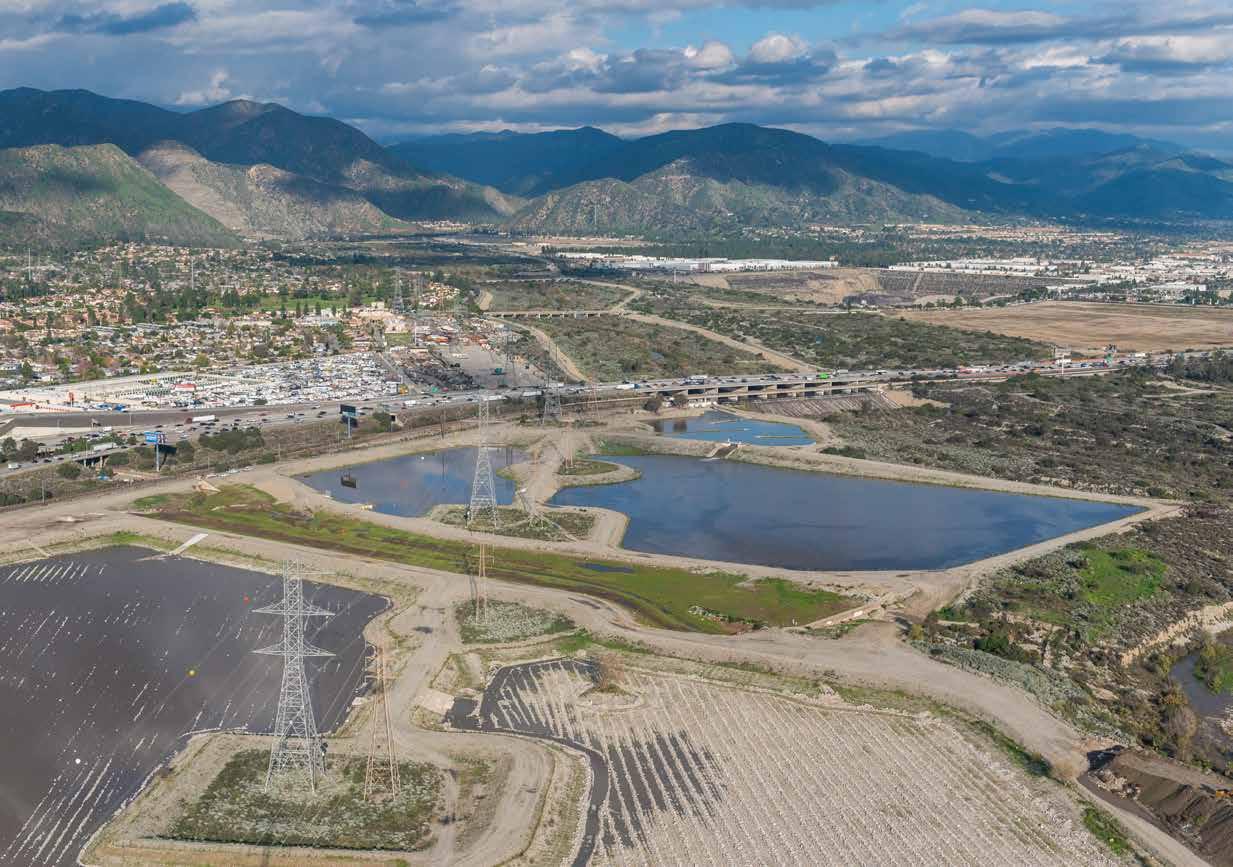
| 43 WATER PLAN
Facilities like the Santa Fe Spreading Grounds can be operated to leverage the recharge potential of local surface and recycled water supplies as well as additional imported water when available.
Facilitating natural infiltration of precipitation
Collectively, local stormwater efforts can work to increase the overall permeability of County lands, potentially allowing for decentralized supply development while providing multiple benefits such as improving environmental water quality, ensuring adequate water supplies to ecosystems, and providing greening and recreational opportunities. Certain programmatic initiatives to increase decentralized stormwater recharge are managed locally and through the Los Angeles County Flood Control District’s Safe, Clean Water Program. Further regional collaboration between stormwater and groundwater managers will help to facilitate implementation and maximize benefits.
Actions to support this strategy
10.1 10.2
Facilitate recharge partnerships between stormwater and groundwater managers by enhancing understanding of surface water rights and stormwater.
On Target WATER PLAN
Conduct decentralized facility infiltration water quality impact analysis for groundwater basins to determine parameters for facility implementation and/or mitigation for changes to water quality.
Improving collaboration between stormwater and groundwater managers can improve the feasibility of implementing projects that will help meet the target to increase groundwater recharge and storage by increasing decentralized infiltration by 30,000 AFY.
WATER PLAN 44 | STRATEGY 10
Why this strategy is needed
Large parts of Los Angeles County are urbanized with impermeable surfaces like buildings, roads, and parking lots. Impermeable surfaces do not allow precipitation or stormwater runoff to infiltrate naturally into groundwater basins and may reduce local stormwater capture and groundwater recharge. Implementing projects that increase stormwater recharge of groundwater basins can be challenging due to limited understanding of and/or disagreement over surface water rights as well as concerns about the infiltration of poor-quality surface water impacting groundwater basin water quality.
Although the majority of the Los Angeles River flows within engineered flood control channels, there are sections that allow for natural infiltration to occur.
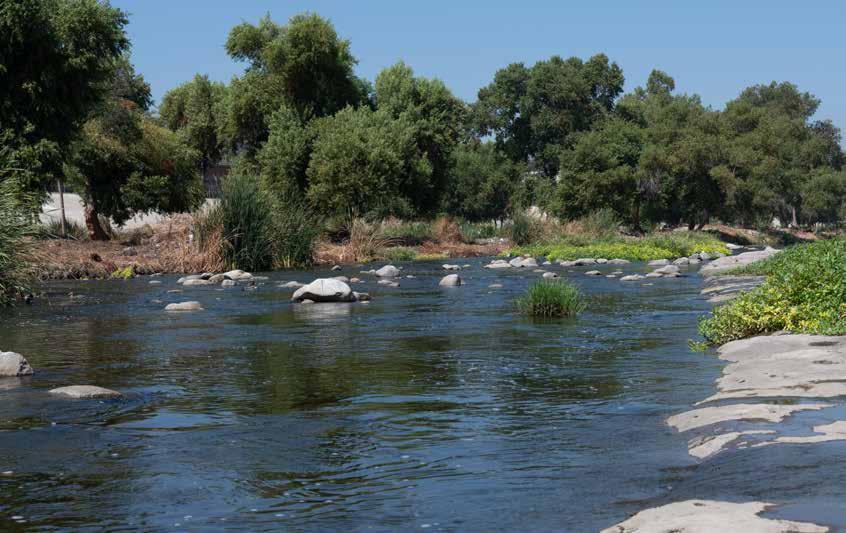
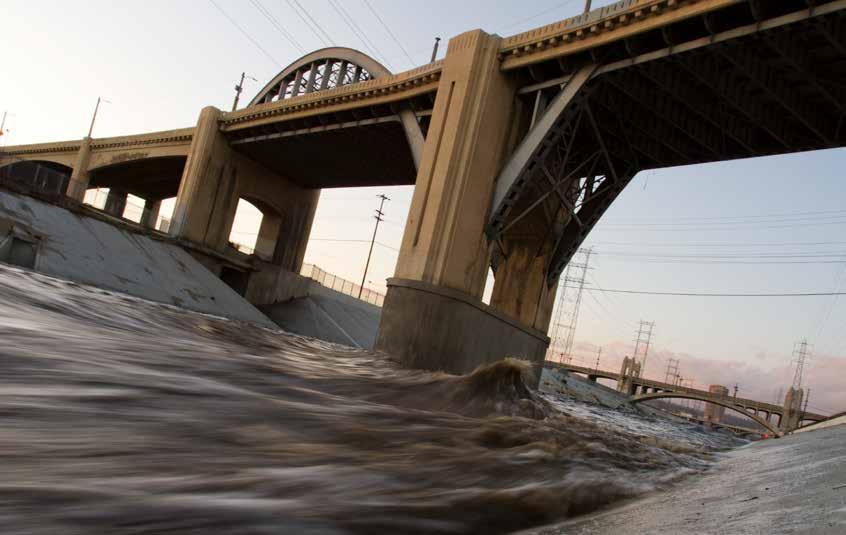
| 45 WATER PLAN
Providing regional support for small, at-risk water systems
A regional program to identify and support small, at-risk systems within Los Angeles County, including independent systems and private wells, would provide a better understanding of each system’s unique needs, improve drinking water equity, increase workforce training, leverage funding opportunities, and tailor strategies to create longer-term resilience and higher-quality supplies.
Actions to support this strategy
11.1
Initiate a voluntary Small, At-Risk System Support Program or programs to promote small water system resiliency, not just address near-term emergency needs.
11.2
Identify “at-risk” systems and technical, managerial, and financial needs by collecting existing data (such as the County Department of Public Health’s ongoing system inspection (i.e., annual sanitary surveys)) and assessment program reports, drawing upon the United States Environmental Protection Agency technical, managerial, and financial assessment guidance.
11.3
Facilitate Small, At-Risk System Support Program to provide administrative and technical advisory support to small, at-risk yet viable purveyors to take a range of resiliency actions (e.g., create Water Master Plan and asset management program, ensure workforce succession planning, establish and check interconnections, ensure emergency storage, enhance cybersecurity, acquire emergency generators, provide resources for grant applications, regulatory compliance, and existing operations and maintenance, etc.).
11.4
Develop program to map, monitor, address, and alert the public to drinking water quality issues that originate from on-site plumbing issues including monitoring for color and odor issues in premise plumbing, especially in underrepresented communities.
11.5 11.6
Encourage all Los Angeles County water agencies to adopt and implement hazard mitigation plans and to join the California Water/Wastewater Agency Response Network (CalWARN).
Expand local agency participation in Water Information Sharing and Analysis Center to access the latest cybersecurity strategies.
WATER PLAN 46 | STRATEGY 11
Failing
11 Water Systems
Population
Funding
Since 2017
At-Risk Potentially At-Risk
23
33
Many small, at-risk systems serve disadvantaged communities within Los Angeles County. As a result, these communities are at a higher risk of not receiving the same level of drinking water quality and reliability as other communities within Los Angeles County. Compliance with regulated drinking water standards can still result in inequities in the taste, color and odor of water served. Although small, at-risk systems in Los Angeles County can be regulated by multiple entities, the SWRCB Division of Drinking Water is the only entity currently documenting underperforming systems through reporting of maximum contaminant level exceedances (e.g., Safe and Affordable Funding for Equity and Resilience program). Identifying systems that are at risk of providing poor water quality, unreliable supply, cybersecurity threats, and excessive cost to ratepayers can be more challenging at the state level. Additionally, there is limited regulatory oversight to ensure that these water systems are receiving enough revenue to adequately maintain their infrastructure. Currently, the primary strategy fostered by the SWRCB to mitigate underperforming water systems is consolidation into
249,198
512,463
11,722 $995,000 $500,000 $2,738,793
larger, adjacent systems. This strategy is not always applicable, especially in more rural areas of Los Angeles County given the isolated locations of some small water systems (e.g., those in the Antelope and Santa Clarita Valleys), nor necessary if adequate supportive strategies are in place.
WATER PLAN
On Target
Providing direct support to smaller at-risk water systems through a focused, voluntary regional program will greatly increase the ability to meet the CWP target that seeks to reduce at-risk systems by 100%.
| 47 WATER PLAN
Why this strategy is needed
There are a number of smaller, at-risk systems in Los Angeles County that could benefit from a regional support program.
Source: State Water Resource Control Board SAFER Program as of June 2022 (data updated daily)
Mitigate wildfire effects on water supply and quality
Collaboration between water and land management entities on sharing information, planning ahead, supporting existing efforts, and implementing measures can leverage regional resources to help mitigate the impacts of wildfire on both drinking water supply and environmental water quality.
Actions to support this strategy
12.1
Organize a regional wildfire prevention collective that brings together water, land, and fire managers to collaborate, share information, and explore opportunities for mutually beneficial watershed management programs and projects (e.g., fuel reduction, invasive species removal) for both riparian and upper watershed areas.
12.2
Create a programmatic permitting tool/ process with the United States Army Corps of Engineers for the 404 permit for fuel reduction measures that applies to the entire County and with the Regional Water Quality Control Boards for the 401 Water Quality Certification.
12.3
Enhance existing low water use landscaping education programs to include fire-scaping with information on species that contribute to wildfire spread (e.g., eucalyptus, palms, rosemary), fire starts, firesafe planting standards, landscaping choices, and water collection systems for use during fires.
12.4
Collaborate on identifying and pursuing funding opportunities to support regional wildfire prevention programs.
12.5
Enhance existing hazard mitigation plans to include regional fire management strategies for agencies located within wildland-urban interfaces.
12.6
Advocate for modifications to existing air quality regulations that allow water agencies to run emergency generators longer during fire events to maintain water supply.
12.7
Explore potential land, trail, and forestry management efforts on wildfire prevention in upper watershed areas as well as along transportation and utility corridors to remove ignition sources as well as existing firefighting efforts to minimize dispersal in riparian areas.
12.8
Support efforts exploring alternatives to fire retardants containing PFAS/PFOA that may run off into streams and spreading grounds.
WATER PLAN 48 | STRATEGY 12
Wildfire frequency and intensity has been increasing across Los Angeles County and is a cause of great concern for water supplies and environmental water quality. Wildfires can interrupt power supply and damage infrastructure, directly impacting the ability to maintain water and wastewater systems during and after events. Wildfires increase pollutant loads and decrease watershed infiltration that can lead to flooding, erosion, and mass wasting of watershed lands – impacting communities as well as the quantity and quality of water resources.
Why this strategy is needed
WATER PLAN
On Target
Working with land and fire managers on reducing the potential for and the water resource impacts from wildfires starts with the CWP target to confirm 100% of water management agencies within the wildland-urban interface are implementing a wildfire resilience or mitigation plan.
| 49 WATER PLAN
Ash, debris, fire retardant, and other contaminants can impair surface water supplies during and after wildfire events through erosion and sediment transport.
Managing invasive species in riparian areas
As many water resources related agencies also manage some watershed riparian areas, there is an opportunity for regional collaboration between watershed land and water management entities on invasive species removal done in an ecologically sensitive manner that restores native habitat. Removal of invasive species can be facilitated by wildfires and flooding if additional measures are taken following these events to fully remove and replant native species within damaged areas.
Actions to support this strategy
13.1
Enhance existing Weed Management Area for Greater Los Angeles to serve as an overall invasive management decision team with tiers of information sharing to support coordination among agencies (permitting, resource sharing, defensible space guidelines, etc.) with state and federal involvement and an invasive land coordinator.
13.2
Share information on areas with invasive species of mutual concern across Los Angeles County as well as planning initiatives, programs, and measures being taken to reduce invasives in riparian areas.
13.3
Consider initiating an annual regional invasive species removal program and post-fire program to improve soil quality and reduce repropagation, further spreading, and biomass fuels.
13.4
Explore collaboration with United States Army Corps of Engineers, United States Forest Service, state and national parks, individual cities, nonprofits, and private landowners in invasive species removal in watershed areas managed by water and flood control agencies.
On Target
Enhancing and growing existing efforts to reduce invasive species as well as taking advantage of post-fire conditions will help to meet our targets to reduce firecontributing species in riparian areas by 2,900 acres.
WATER PLAN 50 | STRATEGY 13
WATER PLAN
Why this strategy is needed
While any type of invasive species can create watershed issues, those that infiltrate riparian corridors are of particular concern to Los Angeles County’s water resources. Riparian invasives (e.g., Arundo donax, tamarisk, black mustard, etc.) can dramatically deplete surface water supplies relative to native species and are also known contributors to wildfire ignition and spreading potential. Removal of invasives and replanting with native species in riparian areas is a time-sensitive and cost-intensive process that needs to be maintained over time to remain effective.
Invasive plant species, such as Arundo donax, can increase the potential for wildfire ignitions as well as contribute to increased rates of wildfire spread and intensity.
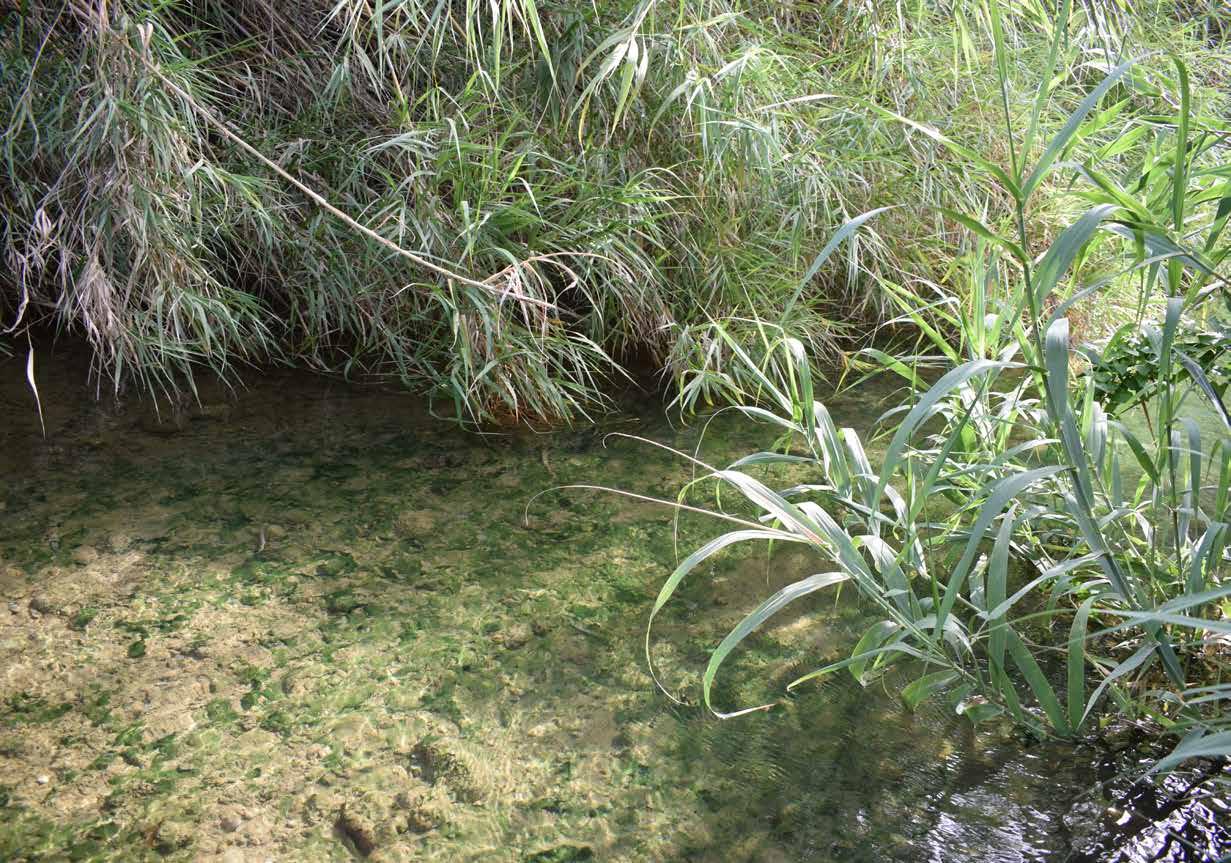
| 51 WATER PLAN
Facilitating sediment management and debris removal from flood control facilities
Regular and enhanced post-wildfire maintenance (e.g., removal of debris and management of sediment) of debris basins and reservoir facilities is critical to maximizing post-wildfire protection and enhancing regional water supplies. Improving prediction of wildfire-related sediment and debris loading impacts, as well as fostering regional support of the actions necessary to mitigate those impacts, will allow for enhanced flood risk mitigation and water supply benefits for the entire region.
Actions to support this strategy
14.1
Improve modeling and weather forecasting to predict the risk of sediment-laden flows after wildfires.
14.2
Increase understanding of how debris flows and fires impact percolation rates.
14.3
Advocate for policies of regulatory agencies that provide more flexibility for removal of vegetation and therefore sediment accumulating in debris basins, spreading basins, and reservoirs as well as erosion control measures.
14.4
Promote education and engagement at the community level as to the importance of sediment and debris management to maintain local flood protection.
WATER PLAN
On Target
Improving the understanding of post-fire impacts as well as facilitating effective debris basin management will help to achieve our target to maintain a minimum of 75% of available capacity in all debris basins and 80% of available capacity in reservoirs.
WATER PLAN 52 | STRATEGY 14
Why this strategy is needed
Burned areas are prone to landslides and debris flows during storm events, resulting in sediment and debris accumulation in flood control facilities. This process degrades water quality and decreases water storage capacity in our debris basins and reservoirs, reducing flood control and local water supply.
Burned areas are vulnerable to flash flooding and debris flows. Following large storm events, sediment and debris can accumulate in flood control facilities, resulting in reduced water storage capacity. The Los Angeles County Flood Control District captures and manages the majority of stormwater flows across Los Angeles County to protect communities from flood damage and increase capture of local water supplies. Eroded sediment and debris are collected and retained by a network of debris basins, reservoirs, and flood control channels, which support recharge of stormwater, recycled and imported water. The ability for the facilities to retain post-wildfire flows as well as facilitate recharge requires consistent removal of accumulated debris and vegetation growth which is often challenging given regulatory constraints and community concerns.
| 53 WATER PLAN
ALIGNING TARGETS AND STRATEGIES
Targets
Strategies
1: Achieving the most efficient water use possible countywide
2: Collaborating on consistent drought preparedness and response messaging
3: Coupling local supply development with regional conveyance
4: Managing salt and concentrate regionally
5: Leveraging regional groundwater storage potential
6: Collaborating on water quality needs and treatment technologies
7: Enhancing cost-effectiveness of pumping and treating impaired groundwater
8: Protecting coastal groundwater basins from seawater intrusion
9: Facilitating regional groundwater recharge understanding and initiatives
10: Facilitating natural infiltration of precipitation
11: Providing regional support for small, at-risk water systems
12: Mitigating wildfire effects on water supply and quality
13: Managing invasive species in riparian areas
14: Facilitating sediment management and debris removal from flood control facilities
A. Achieve 100% compliance with State Urban Water Use Objectives
B.Increase local supply sourcesby 580,000 AFY
C. Meet 100% of water demands even in times of drought
D. Maintain access to6 monthsof emergency supply
E. Maintainat least 700,000 AFY baseline groundwater production
WATER PLAN 54 |
700,000 groundwater production
F. Increase productionin areas overlying impaired groundwaterby
18,000 AFY
G.Enhance regional facility rechargeby 250,000 AFY
H
.Increase decentralized infiltrationby 30,000 AFY
I.Reduce at-risk systemsby 100% J. Improve drinking water equity and affordability
K. Reduce color, taste, and odor drinking water quality issuesby 50% L.Confirm100%of small water systems have accessto alternative sourcesof supply
M.Reduce fire-contributing speciesin riparian areasby 2,900 acres
N. Reduce human-caused ignitionsby 50% O.Maintain 75% capacity in all debris basins and 80% capacityin reservoirs
P. Implementa wildfire resilienceor mitigation plan
| 55 WATER PLAN Additional information about
is available in Appendix B.
Targets
CHAPTER 4
WORKING TOGETHER FOR A RESILIENT WATER FUTURE

The CWP is more than this initial document – it is a dynamic planning process rooted in the spirit of fostering ongoing regional collaboration. Our values, including considering equitable benefits and impacts of water resource management decisions, will continue to drive our progress. The success of this planning effort will continue to involve many water management entities and stakeholders working together, with facilitation by Public Works, to realize our shared vision for future water resilience.

WATER PLAN 56 |
4
Facilitating the CWP Program
Public Works is committed to facilitating continued collaboration and success toward CWP targets, strategies, and actions, and tracking and reporting progress. Following CWP completion, Public Works will initiate the CWP Program. Our overall focus will be on bringing together the appropriate group of participants and resources to fulfill the vision of the CWP. Our role is to lead and facilitate the CWP Program, which will consist of three primary tasks: (1) develop and implement two-year Action Plans, (2) continue collaboration with stakeholders and other planning efforts, and (3) track and share progress.
Public Works will actively solicit participation in the CWP Program from stakeholders, leveraging the IRWM programs as well as other forums. We will also use the CWP Portal to seek and facilitate participation, highlighting opportunities for water management entities and other interested parties to get involved.

As water resource needs and opportunities in Los Angeles County continue to evolve, so will the CWP. Based on the input we received in this effort, future iterations could include topics such as ocean desalination.
Public Works will use the CWP Portal to track progress on the CWP. We will update the CWP Portal over time to reflect current implementation activities, identify additional actions, and seek participation. The CWP Portal will be a critical tool to measure success by tracking progress toward CWP targets. The CWP Portal will enable participants and the public to view the CWP’s implementation progress.
Access the Plan Portal at
Access the CWP Portal at
| 57 WATER PLAN
LACountyWaterPlan . org
IMPLEMENTING TWO-YEAR ACTION PLAN
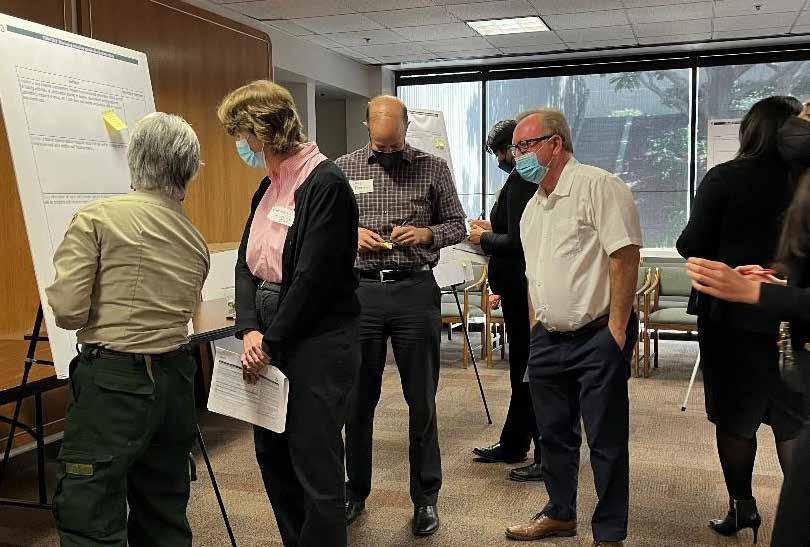
As part of the CWP Program, we will maintain and implement an Action Plan, which identifies the specific steps to advance progress on CWP actions within a two-year period. Where appropriate, Public Works may directly lead an action. More often, we will primarily serve to encourage the collaboration among water management entities and stakeholders to support each action. Our first implementation step will be to pursue resources to establish and facilitate task forces that could advance specific actions. Additional resources will be required to implement the Plan
Public Works, in collaboration with partners and stakeholders, will update the Action Plan every two years, building on prior accomplishments and considering the evolving water management needs, interests, and opportunities of Los Angeles County. The current Action Plan is included as Appendix A.
The two-year Action Plan provides specifics to support the pursuit of the necessary resources to advance each action.
The CWP is intended as a planning tool, or guide, for the development of a shared, inclusive, regional path forward to sustainably achieve safe, clean, and reliable water resources for Los Angeles County. The CWP is a living document which contains concepts that will only become a reality if agencies and stakeholders continue to collaborate effectively and secure corresponding resources. The CWP is subject to change based on the changing needs of the region, new technologies, future legislation and regulations, the continued cooperation of participating entities, and the availability of state, federal, and other longterm stable funding sources. The CWP is intended to provide general direction, including collaborative targets, strategies, and actions. Nothing in the CWP should be construed as a commitment by any participating agency to fund the implementation of any specific actions identified herein. Adoption of the CWP is not intended to serve as approval or authorization for any specific activity that would be considered a project under the California Environmental Quality Act (CEQA).
CONTINUING COLLABORATION
We will continue to work in concert with IRWM regions to implement the CWP, in particular to engage stakeholders and enhance the dialogue on additional opportunities to build resilience through regional collaboration. To support progress on the Los Angeles County targets established in the OurCounty Sustainability Plan, we will coordinate with the County Chief Sustainability Office on implementing strategies and actions to advance our mutual goals. We will also coordinate with and leverage Infrastructure LA, an existing countywide initiative leading regional collaboration to bring resources, including funding, to Los Angeles County. As a sister program to other Public Worksled programs like the Safe, Clean Water Program, the CWP Program will also seek opportunities to work collaboratively with those efforts.
SHARING PROGRESS
Public Works will track continued progress toward the CWP targets and share this progress tracking on the CWP Portal. To track long-term progress towards meeting the CWP targets, we will lead a process to collect data and information from entities throughout the County and State, leveraging the CWP Portal as well as outside data management platforms.
To encourage continued participation and highlight CWP successes, CWP annual implementation updates will be provided. The updates will highlight specific programmatic or project accomplishments throughout Los Angeles County that support CWP regional targets and strategies, including both those undertaken through the CWP and through other local and regional efforts.
WATER PLAN 58 |
Engaging in the CWP Program
All stakeholders with an interest in water resources management in Los Angeles County have a role to play in realizing the vision of the CWP. There are participation opportunities in all three tasks of the CWP Program.
CWP PROGRAM TASK
Implement Two-Year Action Plan
HOW TO GET INVOLVED
• Leading or participating in an action or Task Force
• Sharing information and resources
• Leveraging local and regional efforts to support the CWP vision
Continue Partnership
Share Progress
• Participating in opportunities for collaboration
• Reporting successes that align with CWP strategies and actions
• Providing data to support tracking progress on targets
Our Road to Water Resilience Together

This CWP is the work of a dedicated group of agencies, organizations, and individuals who truly care about the best interests of Los Angeles County’s residents and are working to bring the CWP’s vision to fruition. These contributors are acknowledged in Appendix G. As entities came together to produce this plan, they understood that Los Angeles County water managers, stakeholders, and the public are all in this together and have the opportunity to make things better for generations to come.
To achieve our collective vision of safe, clean, reliable water resources for Los Angeles County, it will be critical that we continue to work together. Public Works is committed to fostering continued collaboration on regional opportunities to generate innovative solutions to complex problems as water management in Los Angeles County evolves. It will take all of us to achieve water resilience.
| 59 WATER PLAN
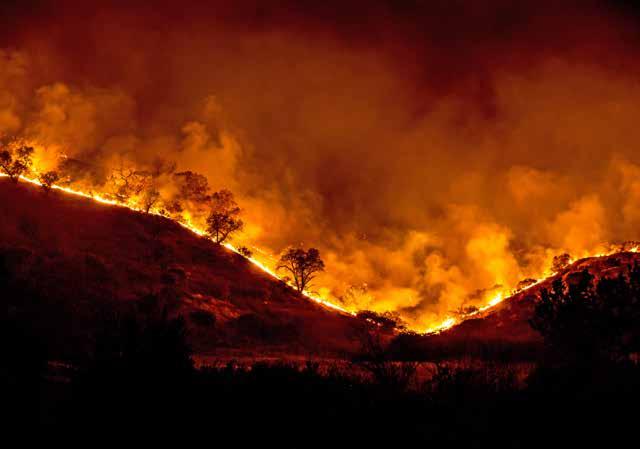
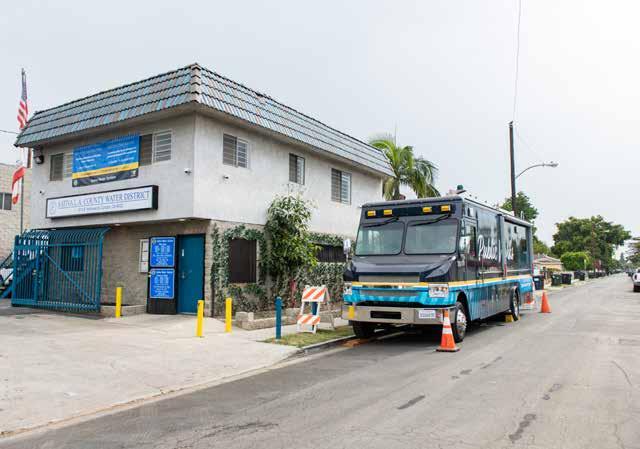

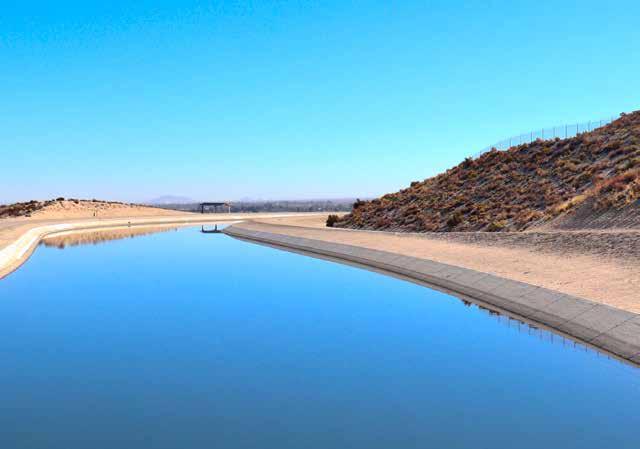
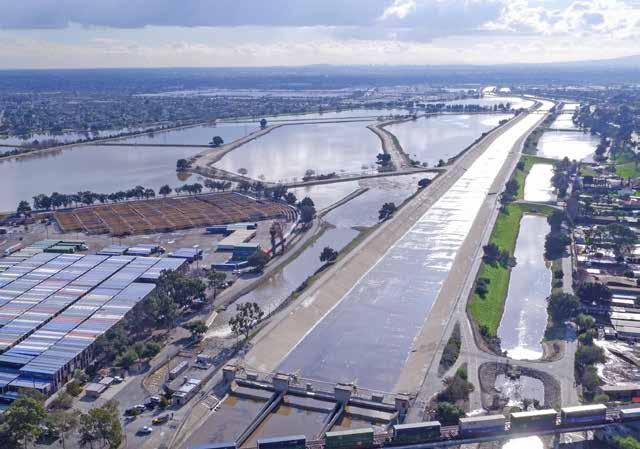

LACountyWaterPlan.org resilience sustainability relationships collaboration regional local equity water resources opportunity Prepared by LA County Public Works with support from Woodard & Curran












































